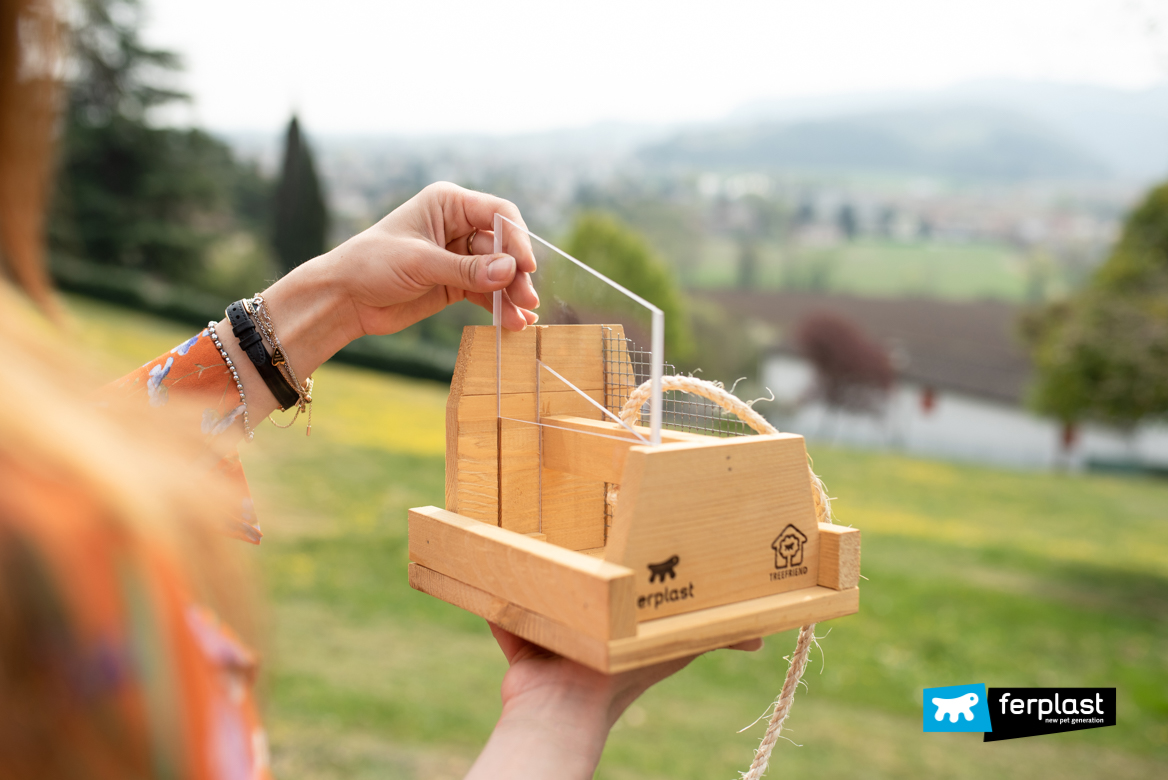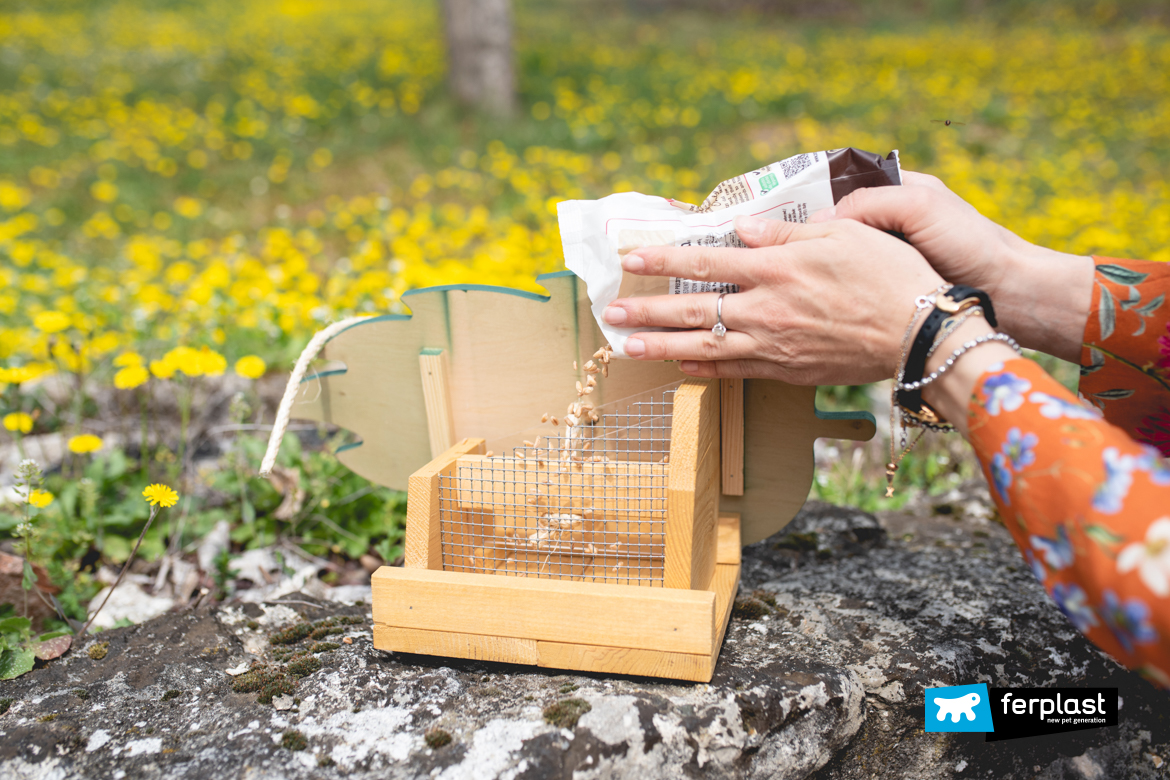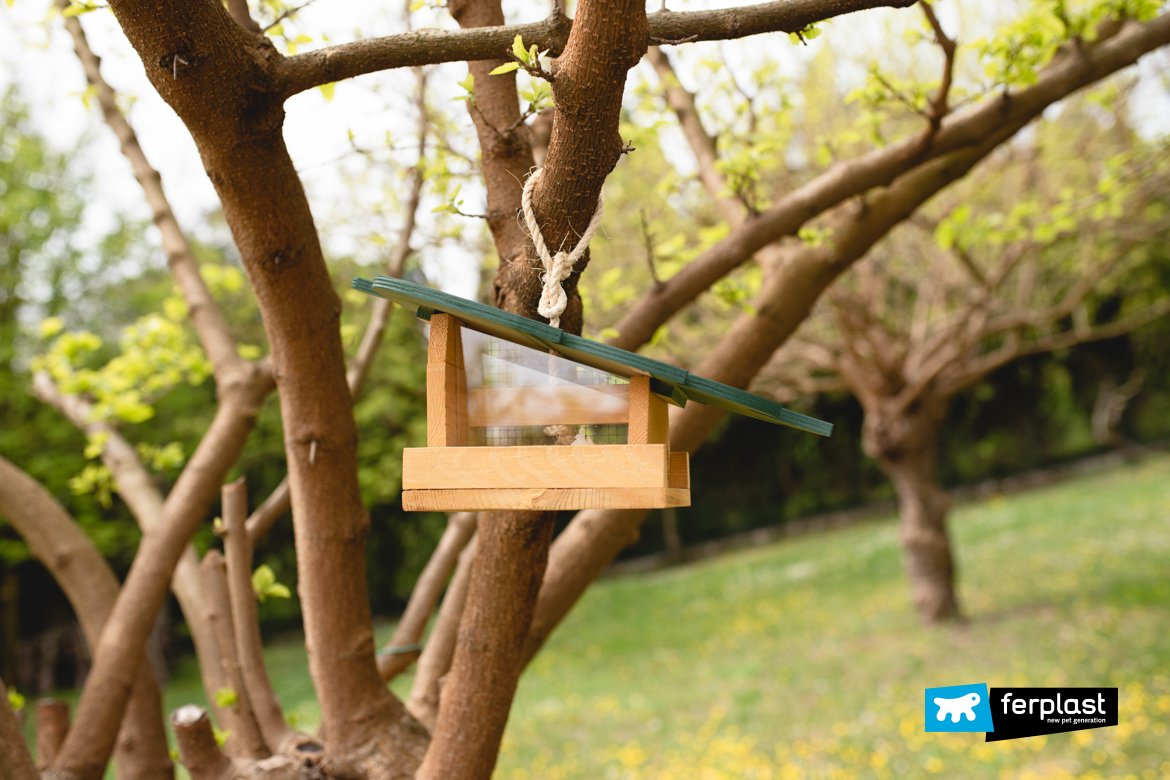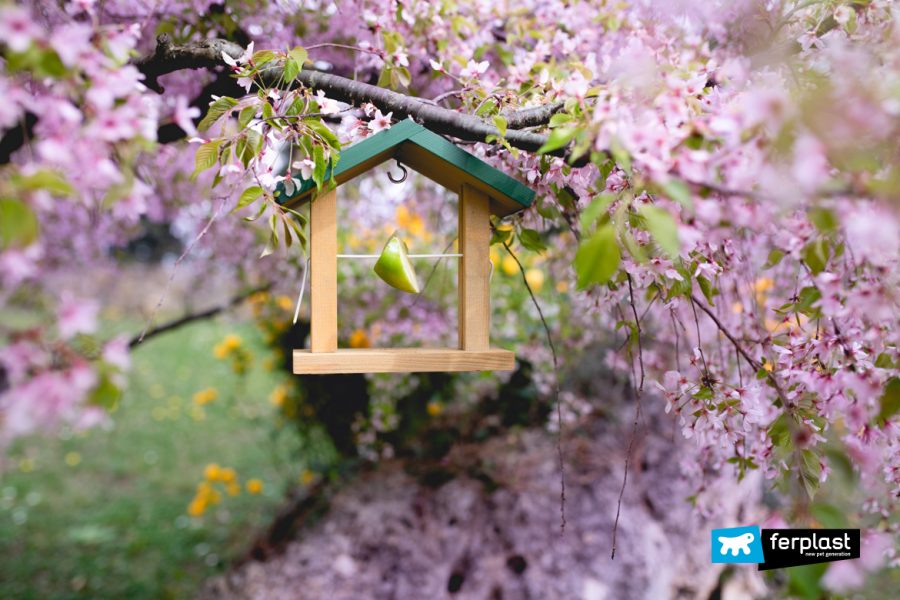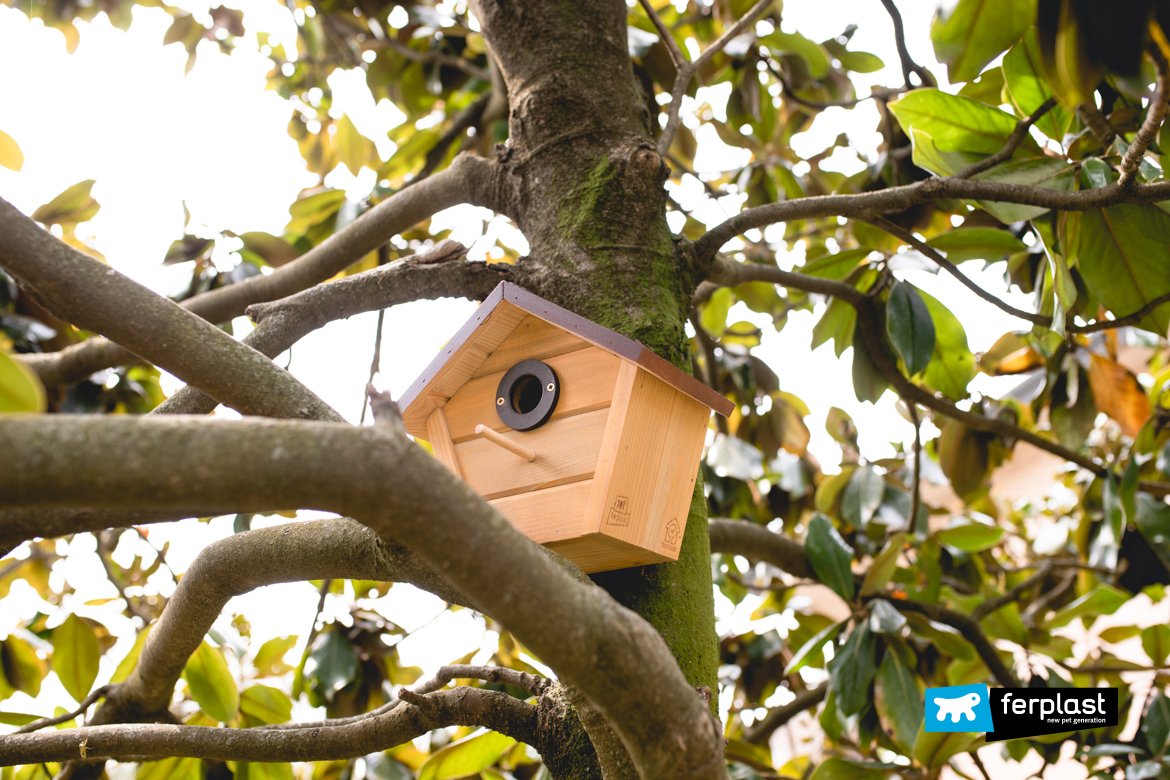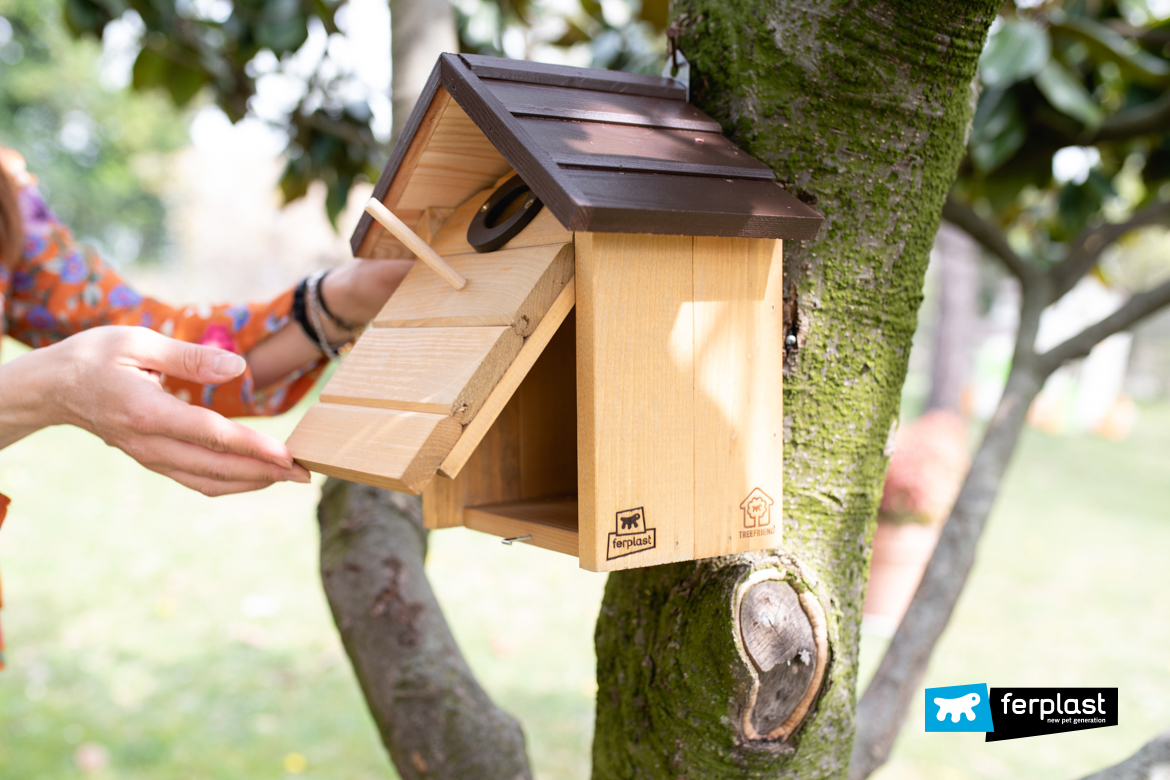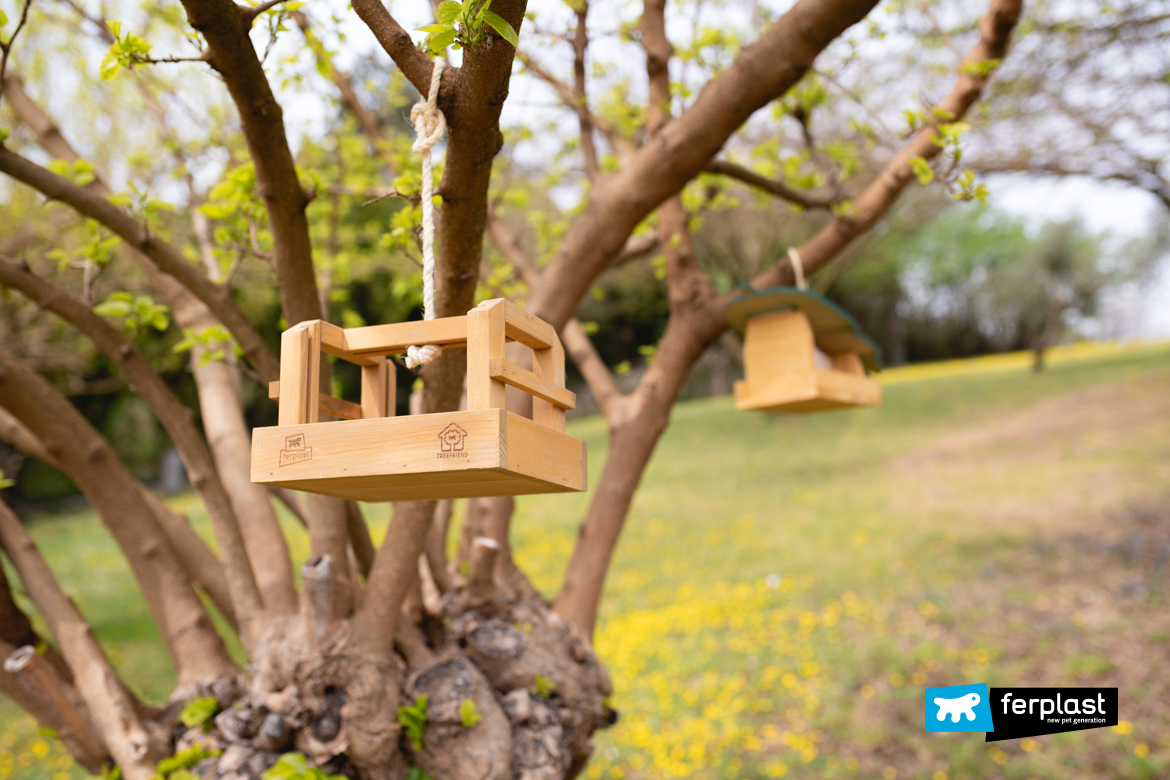Spring brings with it countless wild birds that use the season to find a safe place to nest and raise their chicks. A nice way to help them out is to place nests and eating troughs up in the trees in our gardens.
Which nests to buy
Most bird species build their nests using whatever they find in nature, but they never say no to a nest ready to move in. If you’re willing to host some of these marvellous birds in your own garden, buy some artificial nests. There are many different models available in the market, in different sizes and materials, some more suitable to some species than others.
Ferplast offers a wide variety of outdoors nests for wild animals made of wood strictly from sustainably managed forests.
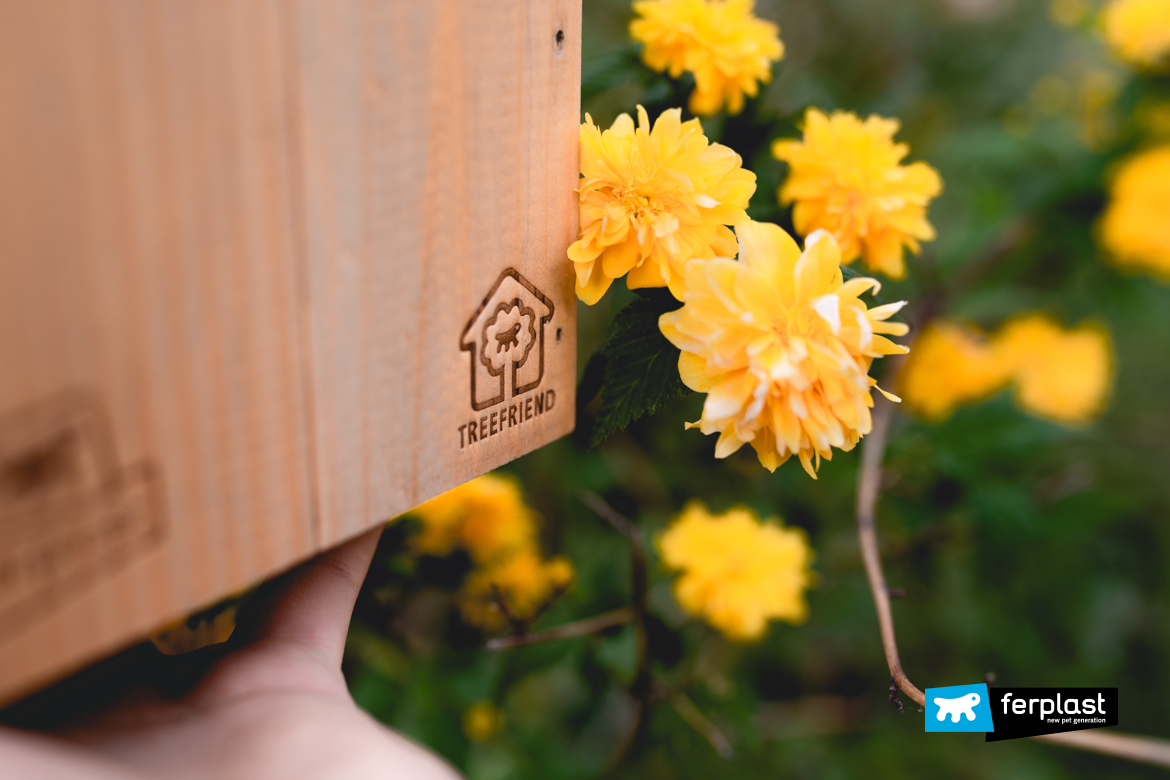
Our Nest line of house-shaped nests with standard front opening (39 mm) that can be reduced with an adapter (to 32 or 28 mm) is suitable for Eurasian wrens, coal tits, European crested tits, Eurasian blue tits, great tits, common redstarts, Eurasian nuthatches, and house sparrows.
Our mailbox-shaped nests, with double entrance slits on the sides, are particularly suitable for treecreepers and for greater and lesser spotted woodpeckers.
Nests shaped like boxes, with a wide front entrance window, such as Ferplast’s Nest 9, are advised for white wagtails, robins and spotted flycatchers.
Where to install nests for wild birds
To make sure you’re doing a good deed and helping the birds you should put them up during winter, but even in March or April you’ll be fine – it’s just that the new tenants will have less time to adapt to the new little house.
Large trees with widespread branches and a lot of room between the leaves are not safe places for birds, which prefer medium-sized trees with thick branches, or even bushes, which they offer more privacy. Ideally, artificial nests should be placed in peaceful areas, away from noise and from possible predators.
How to install the nests
After deciding which tree is the most suitable, move on to the practical stage: installing the nests. They should never be exposed to cold winds, to direct sunlight or to the elements in general, and must always be well fixed to the trunk, through its top and its bottom parts. Of course, they should be firm enough that they won’t sway!
Different bird species nest at different heights, but in general nests should be placed a little more than 3 metres above the ground. Keep in mind that it must be easy to access and not too covered by vegetation. We advise you to place it in such a way that the entrance hole leans slightly down, to keep rainwater from dripping in.
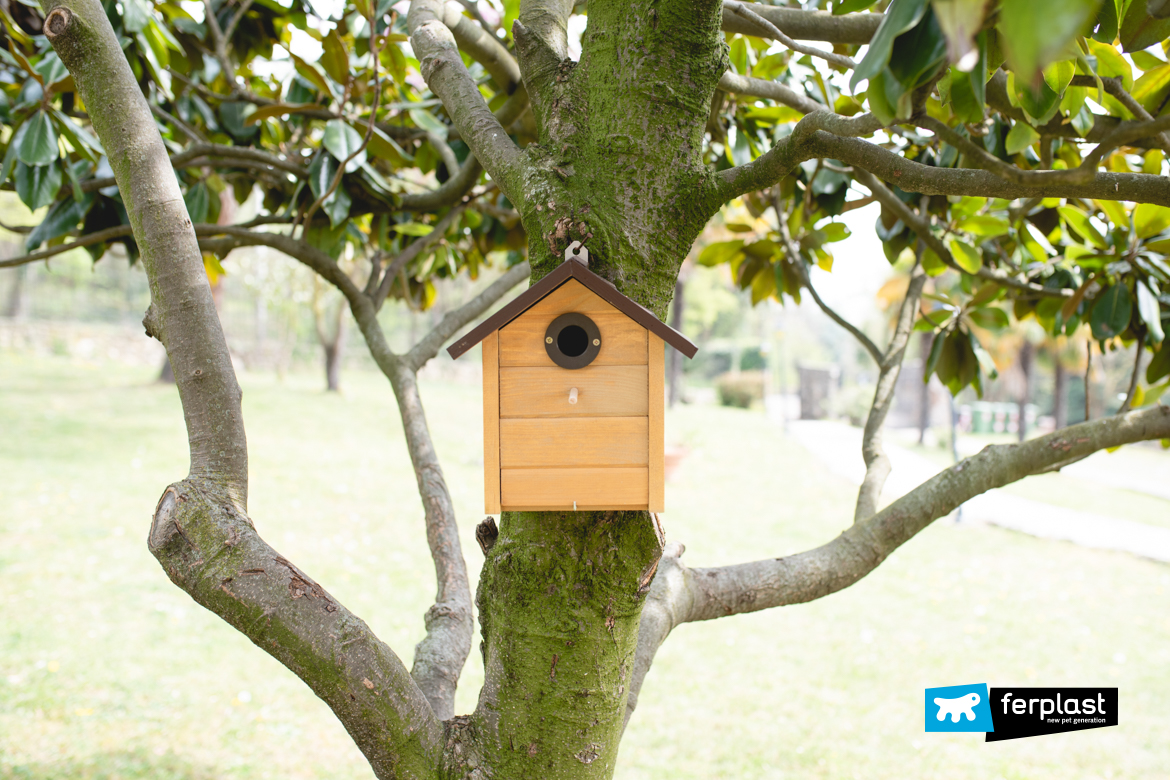
Where there are nests, there should also be feeding troughs, to attract the birds. But don’t overfill them: during the spring months, birds should be able to forage for food themselves!
